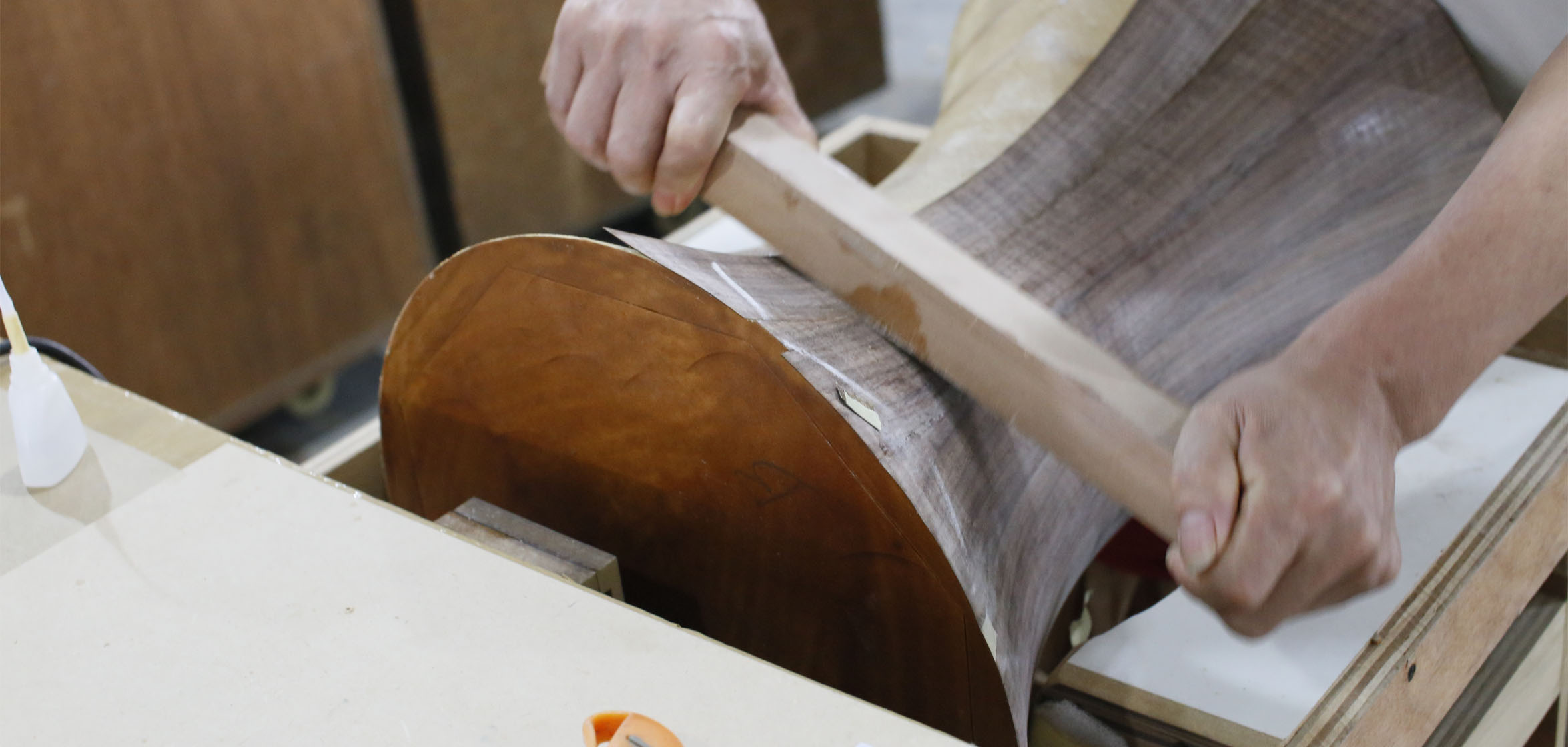
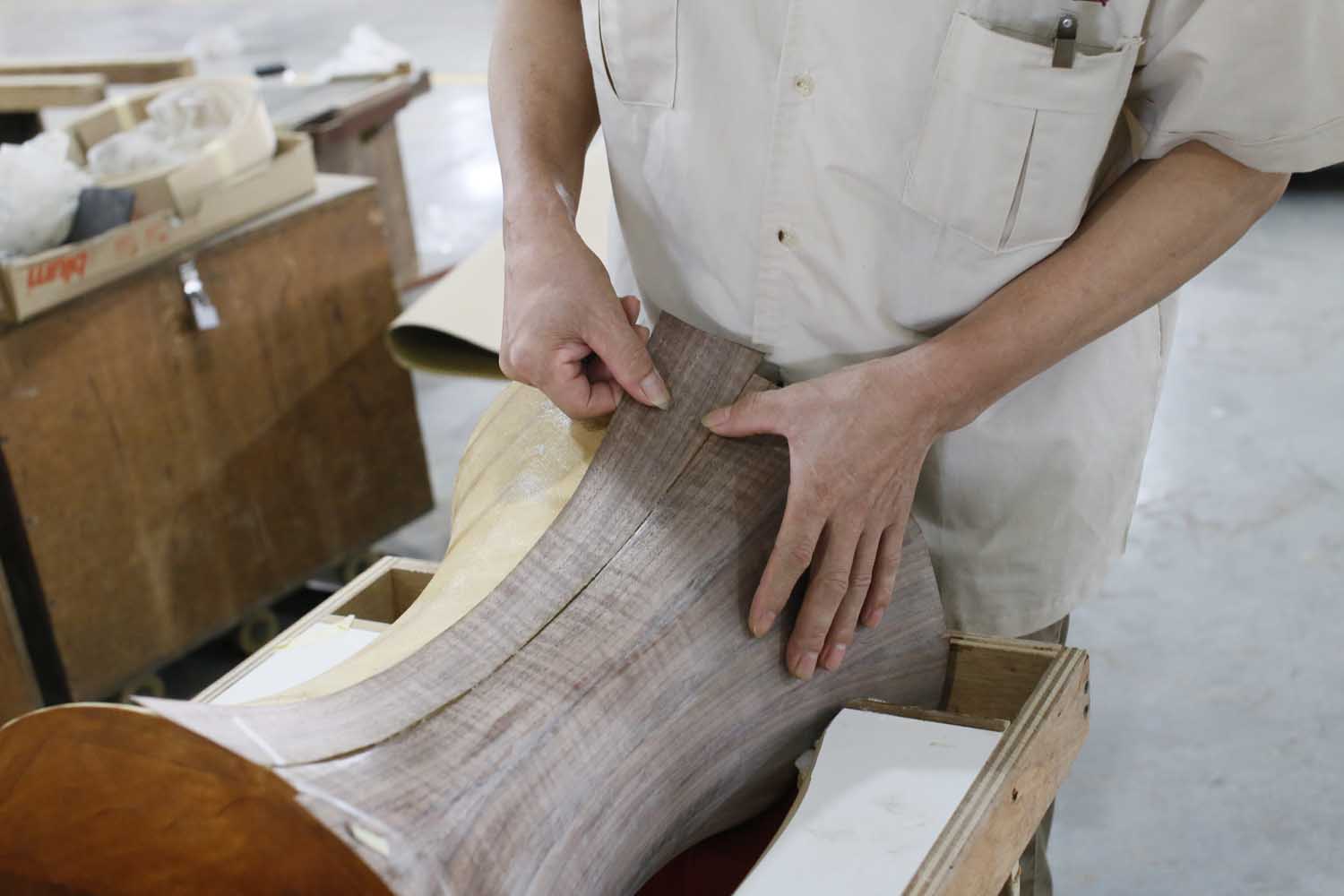
With such a vast number of timber species, methods of slicing and layup patterns to choose from, a helpful approach is to break the design choices down into the following steps.
While we have a vast number of standard veneer samples to choose from, as a custom manufacturer we regularly create new and unique veneer samples for individual projects.
The choice of what timber species to use is one often dictated by design direction and budget, ranging from a generic wood such as Asia Cherry to Santos Rosewood with more unusual options available such as Afrormosia, Sapele and various wood burls most commonly walnut.
Budget inevitably introduces some constraints, but there are also ways to add value through both colour staining and the choice of veneer layup.
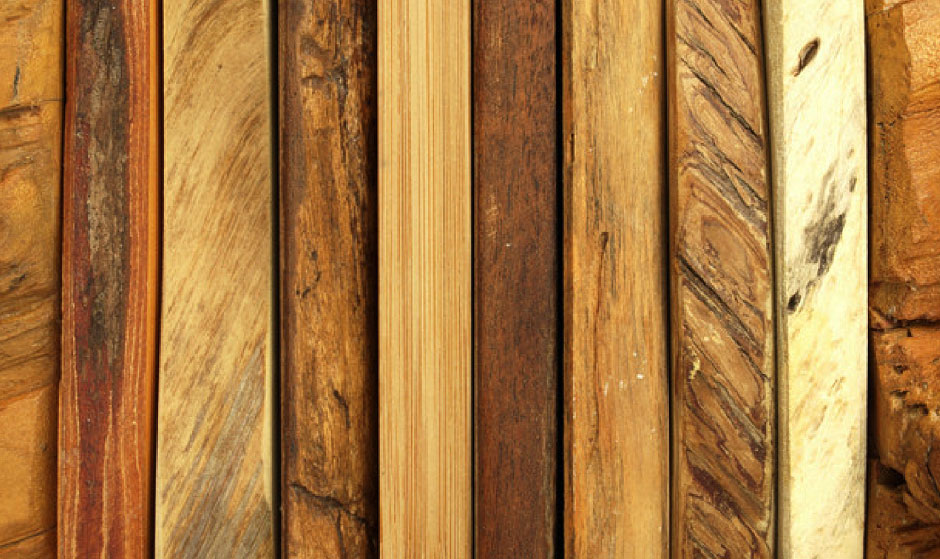
Flat Cut
This refers to the process of slicing from larger lumber planks or half logs, using knives that move backwards and forward – like slicing a loaf of bread. This method best shows figuring of wood e.g. on walnut.
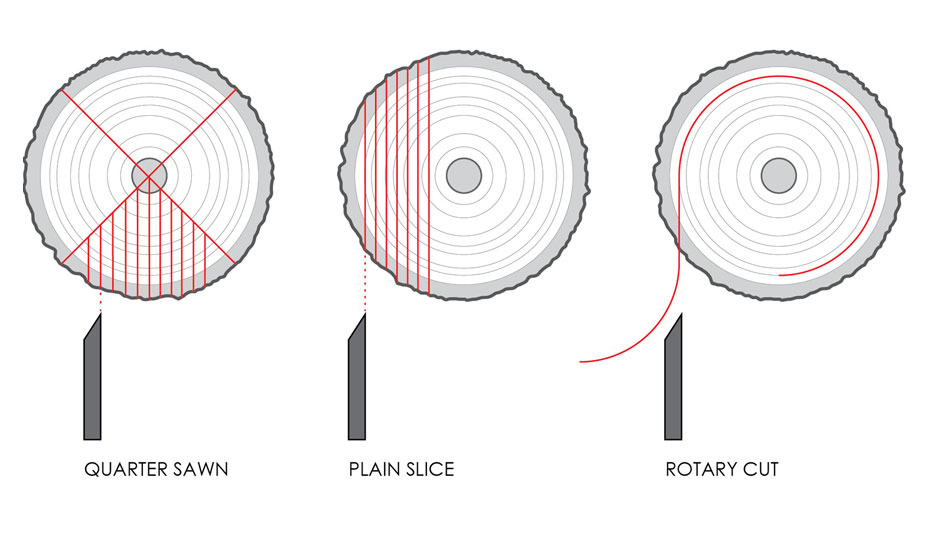 QTR cut (also known as straight cut)
QTR cut (also known as straight cut)
This method of slicing is perpendicular to the annual growth rings of the tree, which creates a very linear grain appearance the end result of which is a stripy veneer. This more rigid veneer is often used on more contemporary design of furniture.
Flat cut (also known as Crotch cut, Crown cut and Plain slice)
This is produced from the portion of the tree just below the point where it forks into other branches. The grain is twisted, which creates a variety of flame figures. The pattern often resembles a well-formed feather or arches and can be described as cathedral when book matched. The outside of the block produces a swirl figure that changes to full crotch flame figure as the cutting approaches the centre of the block. (Especially valuable in Mahogany)
Rotary Cut
The log is turned in a circular motion against a knife peeling off a continuous thin sheet of wood veneer. This is the most economical method of producing veneer, resulting in the highest yield. The grain is inconsistent and leaves are most difficult to match. This type of veneer is best suited for paint grade or utility surfaces.
These are handcrafted patterns achieved by laying wood veneers in a variety of ways. Some are best suited to a particular application, for instance, a starburst veneer layup on a round table, but all have their own intrinsic beauty. These are some of the more common layups below.
Book Matching
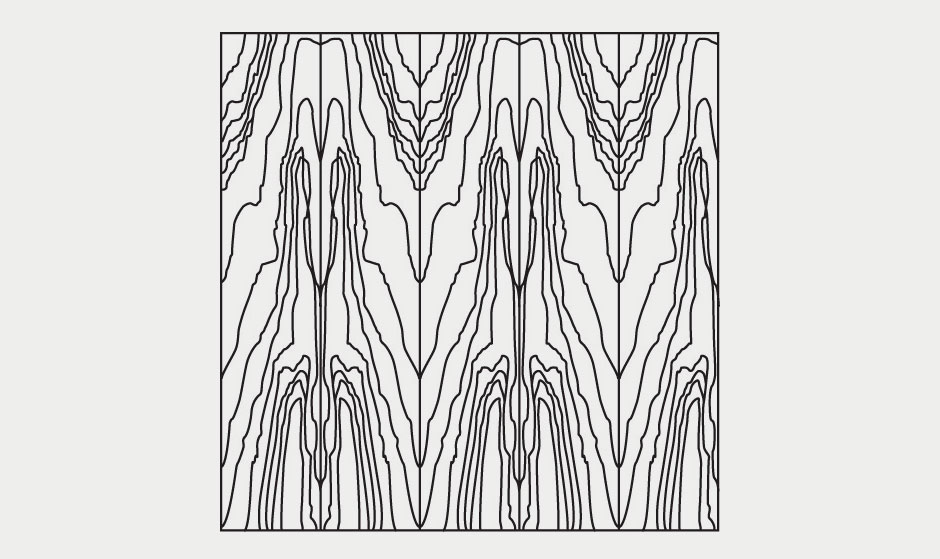
Successive veneer leaves are laid next to one another which appear to have been turned like pages of a book. Since the reverse side of one leaf is the mirror image of the succeeding leaf, the result is a series of pairs. The craftsperson must choose the veneer leaves carefully to ensure that when 2 pieces are butted up against each that the grain matches.
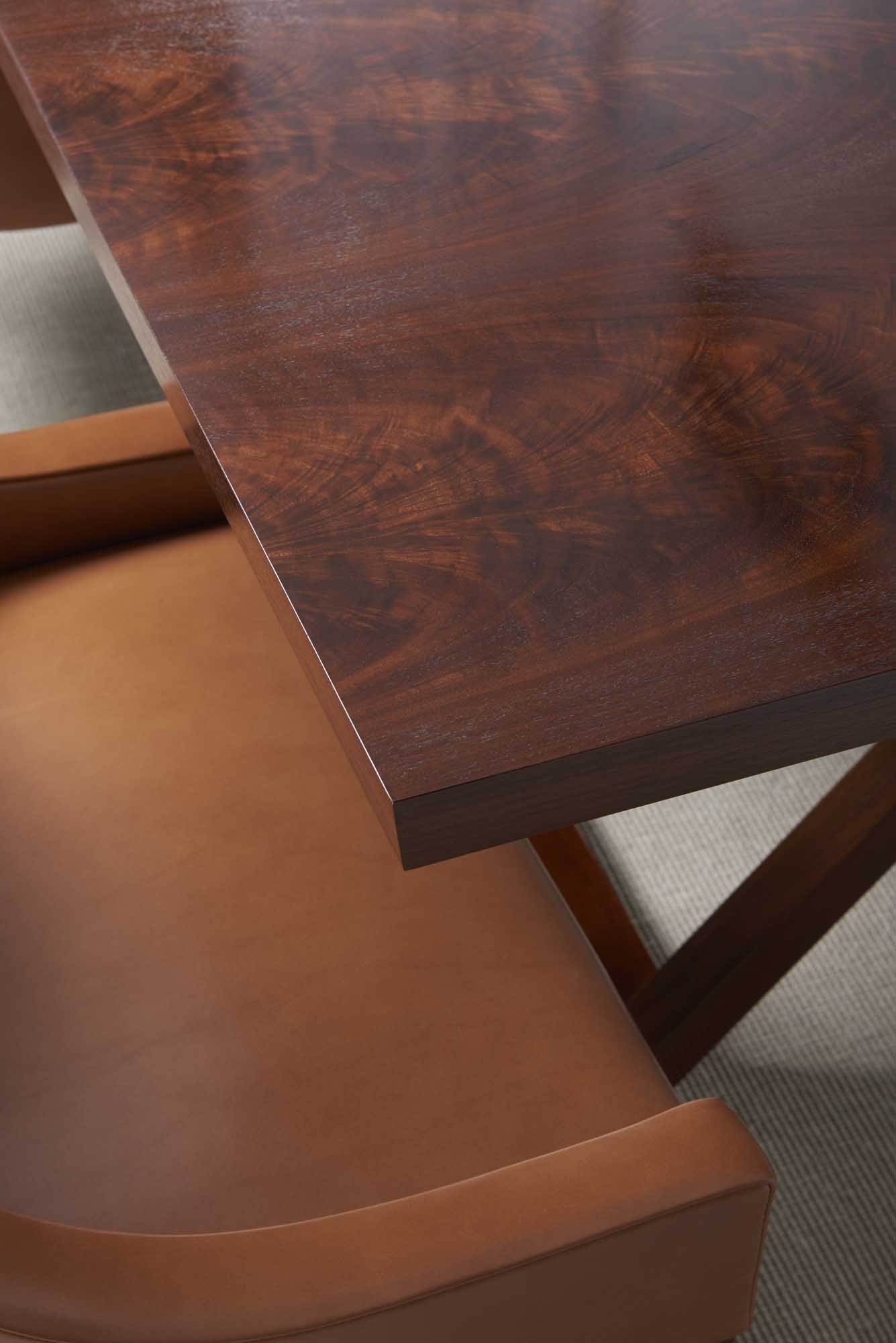
'Book matching' veneer layup on a dining table from Objets Collection by Michael Kirkpatrick
Slip Matching
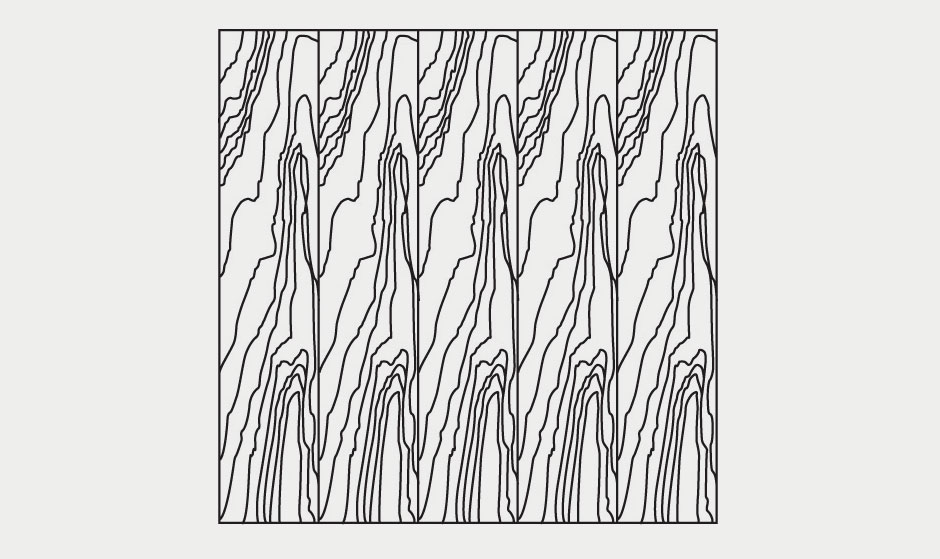
Often used with QTR cut veneers, this is the process in which a sequence of matching veneer leaves are laid in consecutive sheets, creating a continuous display of uniformity where the joins are less obvious.
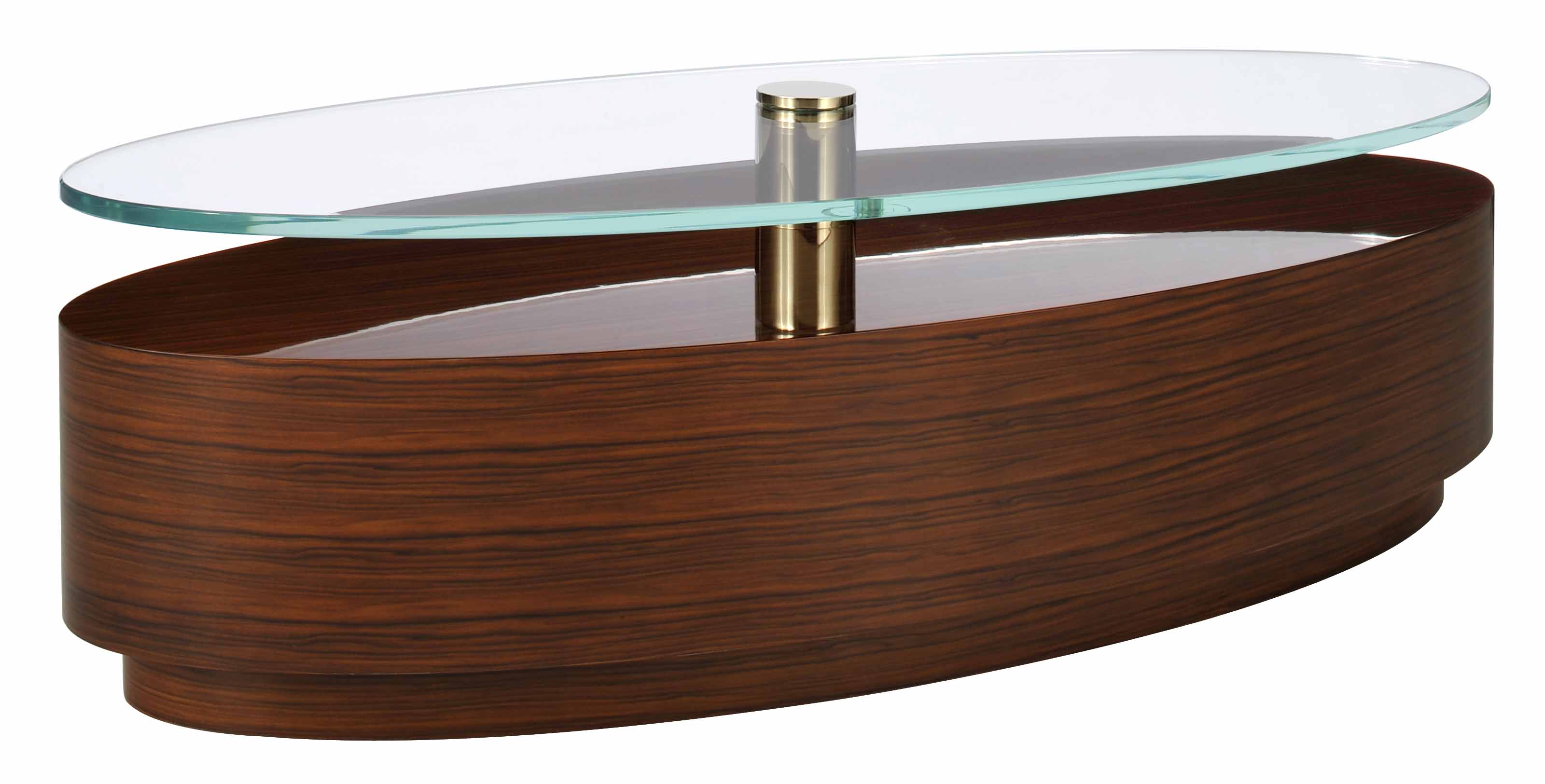
'Slip matching' veneer layup beautifully crafted on a cocktail table from the Cosmopolitan By Dakota Jackson collection
Sunburst
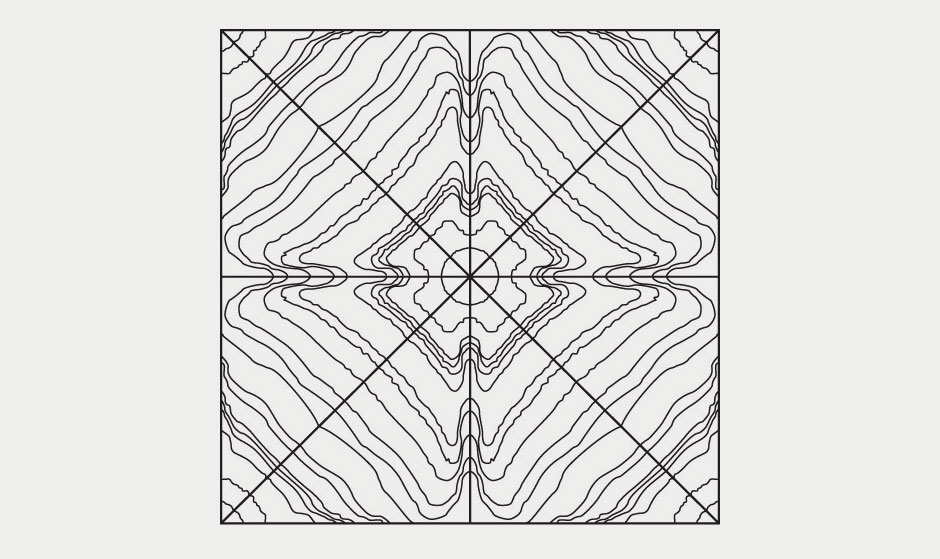
Ideal for enhancing the appearance of a circular table top, this is arguably one of the most spectacular layups that feed out from the centre like a section of a pie chart. If laid well it can even resemble a solid wood like a section of tree trunk.
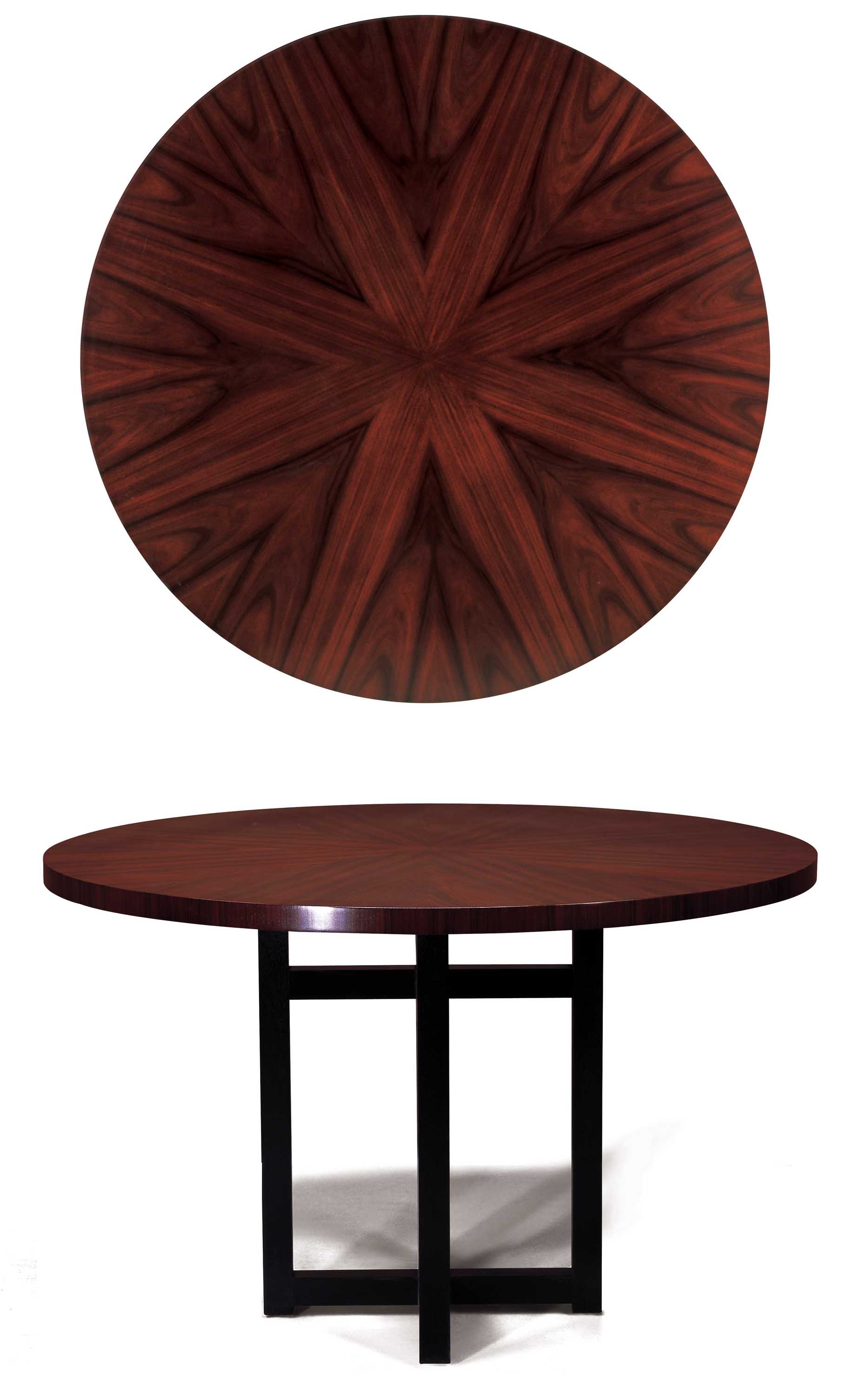
'Sunburst' veneer layup beautifully executed on a round dining table from the Kata collection

3 September 2015